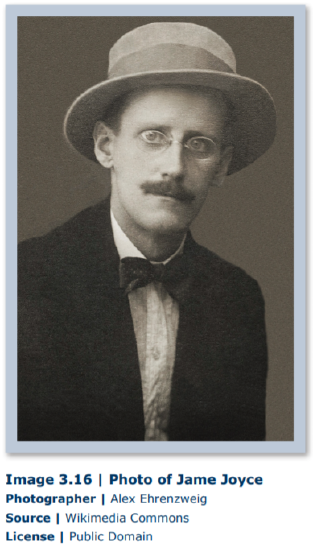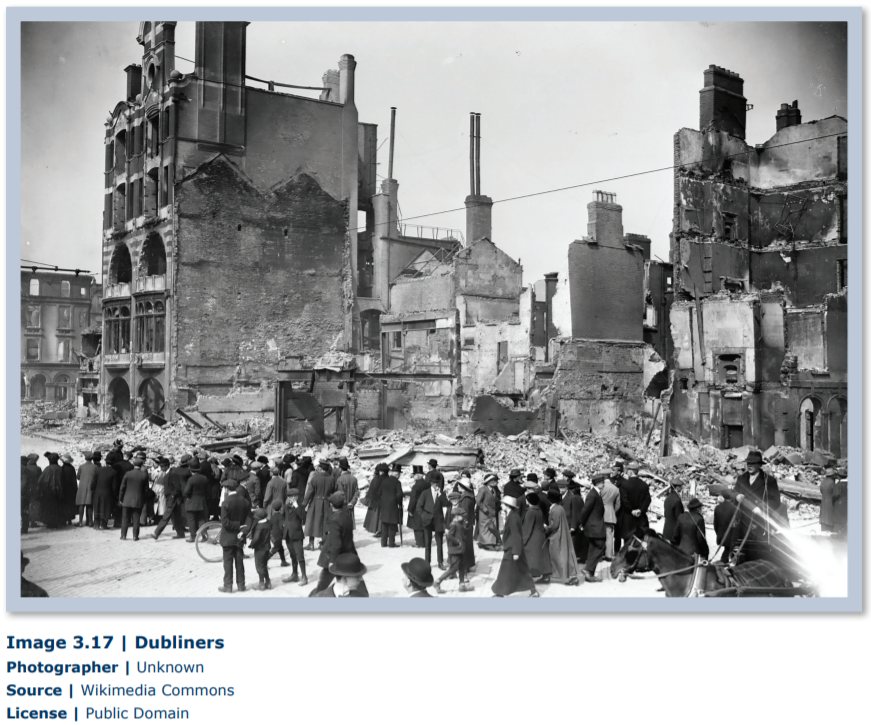3.9.1: Joyce James Biography
- Page ID
- 139043
\( \newcommand{\vecs}[1]{\overset { \scriptstyle \rightharpoonup} {\mathbf{#1}} } \)
\( \newcommand{\vecd}[1]{\overset{-\!-\!\rightharpoonup}{\vphantom{a}\smash {#1}}} \)
\( \newcommand{\id}{\mathrm{id}}\) \( \newcommand{\Span}{\mathrm{span}}\)
( \newcommand{\kernel}{\mathrm{null}\,}\) \( \newcommand{\range}{\mathrm{range}\,}\)
\( \newcommand{\RealPart}{\mathrm{Re}}\) \( \newcommand{\ImaginaryPart}{\mathrm{Im}}\)
\( \newcommand{\Argument}{\mathrm{Arg}}\) \( \newcommand{\norm}[1]{\| #1 \|}\)
\( \newcommand{\inner}[2]{\langle #1, #2 \rangle}\)
\( \newcommand{\Span}{\mathrm{span}}\)
\( \newcommand{\id}{\mathrm{id}}\)
\( \newcommand{\Span}{\mathrm{span}}\)
\( \newcommand{\kernel}{\mathrm{null}\,}\)
\( \newcommand{\range}{\mathrm{range}\,}\)
\( \newcommand{\RealPart}{\mathrm{Re}}\)
\( \newcommand{\ImaginaryPart}{\mathrm{Im}}\)
\( \newcommand{\Argument}{\mathrm{Arg}}\)
\( \newcommand{\norm}[1]{\| #1 \|}\)
\( \newcommand{\inner}[2]{\langle #1, #2 \rangle}\)
\( \newcommand{\Span}{\mathrm{span}}\) \( \newcommand{\AA}{\unicode[.8,0]{x212B}}\)
\( \newcommand{\vectorA}[1]{\vec{#1}} % arrow\)
\( \newcommand{\vectorAt}[1]{\vec{\text{#1}}} % arrow\)
\( \newcommand{\vectorB}[1]{\overset { \scriptstyle \rightharpoonup} {\mathbf{#1}} } \)
\( \newcommand{\vectorC}[1]{\textbf{#1}} \)
\( \newcommand{\vectorD}[1]{\overrightarrow{#1}} \)
\( \newcommand{\vectorDt}[1]{\overrightarrow{\text{#1}}} \)
\( \newcommand{\vectE}[1]{\overset{-\!-\!\rightharpoonup}{\vphantom{a}\smash{\mathbf {#1}}}} \)
\( \newcommand{\vecs}[1]{\overset { \scriptstyle \rightharpoonup} {\mathbf{#1}} } \)
\( \newcommand{\vecd}[1]{\overset{-\!-\!\rightharpoonup}{\vphantom{a}\smash {#1}}} \)
James Joyce was born in Dublin into a middle-class, Catholic family. Joyce’s father John was a property tax collector whose alcoholism and consequent unreliability steadily reduced the family’s income and social standing. Joyce’s education became tenuous when, due to financial uncertainty, he was removed from Clongowes Wood College. He studied briefly at Christian Brothers O’Connell School before finding a place at Belvedere College, a Jesuit school. He then studied modern languages at University College Dublin where he immersed himself in literature and theater.
In 1901, Joyce and his partner Nora Barnacle left Ireland to live in Trieste, where Joyce taught English; they also lived in Zurich and Paris. Although he lived on the Continent,  Joyce’s writing consistently drew from his life in Dublin. His own intellectual and artistic growth, his school mates, roommates, acquaintances, and family members shaped and gave focus to his work, as did conflicts arising from Joyce’s views on Roman Catholicism and Irish self-governance.
Joyce’s writing consistently drew from his life in Dublin. His own intellectual and artistic growth, his school mates, roommates, acquaintances, and family members shaped and gave focus to his work, as did conflicts arising from Joyce’s views on Roman Catholicism and Irish self-governance.
In 1912, he returned briefly to Ireland to see to the publication of The Dubliners (1914), a collection of short stories. Joyce’s short stories redefined the traditional short story narrative form by “replacing” the rising-action, climax, and aftermath of Freytag’s triangle with Wordsworthian spots of time, or what Joyce termed epiphanies. Its “action” reveals hidden motivations, motivations that are deeper than the “real” situations the stories describe, motivations that lie deep in the unconscious. Joyce’s realism ultimately opens up into the human psyche.
Through the financial support of Harriet Shaw Weaver (1876-1961), to whom the American writer Ezra Pound (1885-1972) introduced Joyce while in Zurich, Joyce published Portrait of the Artist as a Young Man, revised from an earlier draft entitled Portrait of the Artist, and worked on his monumental novel Ulysses (1922).
Despite financial strain, worsening eyesight, and the mental instability of his and Nora’s daughter Lucia, Joyce continued to experiment with writing, gaining literary renown among an important circle of intellectuals and artists. Harriet Shaw Weaver and Maria McDonald Jolas (1893-1987) and Eugene Jolas (1894- 1952) supported Joyce as he moved through Ulysses to Finnegan’s Wake (1939).
Ulysses, a novel that used almost every extant genre and style of writing and reading, reshaped what twentieth-century (and twenty-first century) novels would become. It used for a structural element what T. S. Eliot called the mythic method, or analog: Odysseus’s return from Troy to Ithaka. The book maintains a tension between this mythic analogue and realism. The novel as a genre highlights realism. In Ulysses, realism seems uppermost, particularly as critics have identified actual events and people from Dublin who appear in the novel; yet, the analog breaks through. Its use of symbolism ultimately casts doubt on a concrete, logical sense of history, casts doubt on linear time so that reality becomes protean.

Finnegan’s Wake furthers these experiments with style by experimenting with language, structure, subject, and meaning. Finnegan’s Wake hoists the novel as genre entirely beyond the “familiar” into territory that is still being “explored.”
Joyce died in Zurich from surgical complications after a perforated ulcer.

